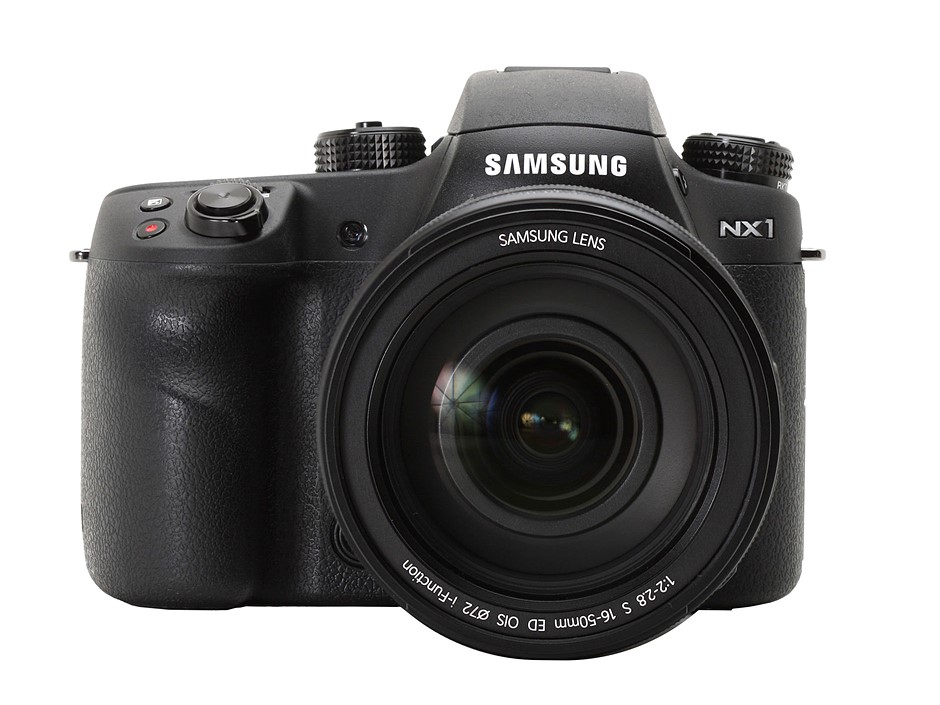
|
The APS-C chip in the Samsung NX1 was the largest BSI CMOS sensor we’d then seen. It would be another four years before one was used again, in the Fujifilm X-T3. Photo: DPReview.com |
Ten years ago today, in 2014, Samsung announced its flagship mirrorless camera, the NX1. Built around Samsung’s own 28MP APS-C BSI-CMOS sensor, the NX1 arrived with a level of performance not previously seen in a mirrorless camera.
The NX1 featured a hybrid autofocus system with phase-detect AF points across 90% of the frame, 15fps burst shooting (along with an AF system that could keep up), 4K video and impressive wireless and Bluetooth connectivity. And, at a body-only price of $1499, it arrived at a competitive price for its class.
When I was assigned to lead the review of the NX1, Samsung was barely on my radar as a camera manufacturer. Of course, I knew Samsung manufactured cameras, but like many serious photographers, I had never used one. To be blunt, I was blown away by what the NX1 could do, and it turned out to be the most capable mirrorless camera I had experienced to date.
I had used quite a few mirrorless cameras before the NX1, but the NX1 reset my expectations for what a mirrorless camera could do, and it felt like the first one that had the potential to replace a high-performance DSLR. The biggest compliment I could give it was that after using it for a short time, I stopped thinking about the fact that it was a mirrorless camera and just got on with the business of taking photos. I was so impressed that I picked the NX1 as my 2014 Gear of the Year.
The NX1 built a reputation for pushing the limits of mirrorless technology, and over the years, it acquired an almost mythical status in camera lore. Even now, I hear people speculate about what the camera industry might look like today if Samsung had remained in the business.
To be clear, many modern mirrorless cameras can run rings around the NX1 thanks to technologies like AI-based autofocus, stacked sensors, and video tools like Log gamma and internal ProRes or Raw recording. However, the NX1 was ahead of the curve, and it took several more years for those other advancements to come to fruition.
“The NX1 built a reputation for pushing the limits of mirrorless technology, and over the years, it acquired an almost mythical status in camera lore.”
How far ahead of the curve was it? Far enough that many people didn’t even have computers capable of playing the H.265 video files the camera produced. The NX1 was the first time I can remember listing the same feature – the H.265 (HEVC) video codec – as both a pro and a con in the conclusion: pro because the codec was more advanced than the H.264 codec in everyday use at the time, pointing the way to the future, and con because many users had to run the NX1’s video files through third-party software to convert it to a format that they could open on their computers.
The NX1 was by no means perfect. In our review, I called out the over-sensitive touch screen and some awkwardly located buttons, but these weren’t significant shortcomings.
One factor that impressed us was Samsung’s commitment to improving the camera through firmware updates. It provided several updates in the months after launch, some of which added significant features or performance improvements, particularly for video.
 |
| I was so impressed by the NX1 that I picked it as my 2014 Gear of the Year. Unfortunately, Samsung exited the camera market a few months later. |
In fact, a firmware update was responsible for delaying our review of the NX1 by a couple of months. About three days before our first review was set to publish, Samsung sent us a new firmware update that was only days from public release. It changed and improved the camera so much that it rendered much of our review obsolete. As a result, I had to retest almost every major feature on the camera, a task that took several weeks, and I essentially wrote an entirely new review, which is the version you read on DPReview.
Despite the fact that Samsung exited the dedicated camera market years ago, I have to admit that I still sometimes wonder how the industry might be different today if Samsung had stayed the course, creating competitive products that pushed the limits of what technology could do in a mirrorless camera. Of course, we’ll never know, but it’s certainly fun to speculate.





